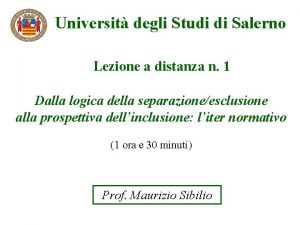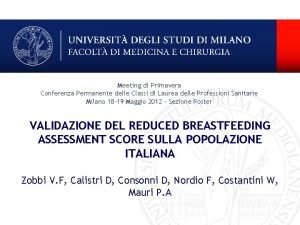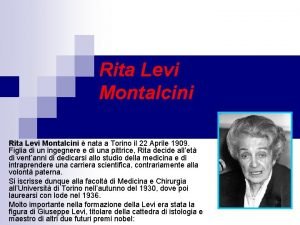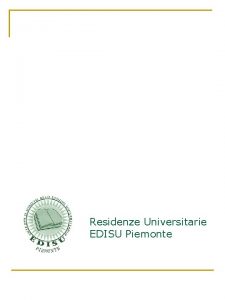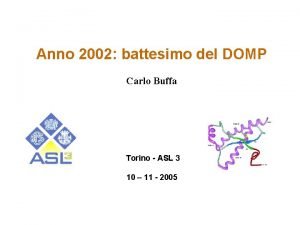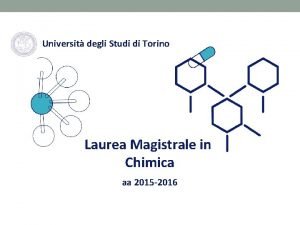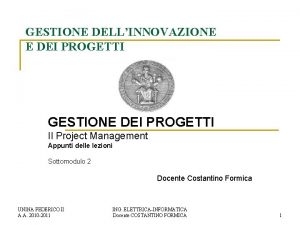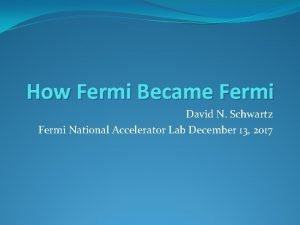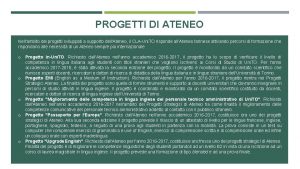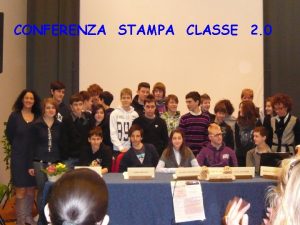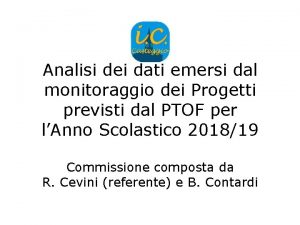10 Conferenza dei Progetti del Centro Fermi Torino



















- Slides: 19

10° Conferenza dei Progetti del Centro Fermi – Torino – 6 7 8 Marzo 2019 Referent Teachers: Prof. ssa Antonella Azzone Prof. Francesco Cirrottola Prof. Michele Somma Students: Giacomo Fortunato Alessio Maurelli Bitetto - Bari

A group of 40 students of “Liceo Amaldi’’ have taken part to the “Extreme Energy Events” project for three years. They are studying the telescopes’ data collected at other schools. In January 2019 two teachers and ten students of our school went to CERN, in Geneva, to build the MRPC chambers of the telescope, which is going to be installed in our school.

Goals of our analysis To measure the angular distribution of cosmic rays. To measure the speed of cosmic ray muons. Software used: • Lazarus • Excel • Root

Lazarus is a multi purpose didactic software. We used it to created this tools to replace in a file. CSV the decimal point with a comma.

To study the cosmic ray muons speed: We have computed the muons speed as the ratio Track. Of. Length / Time. Of. Flight (cm/ns) We have created a frequency histogram of the speed distribution. We have compared this histogram with a gaussian function.

We analyzed data from different telescopes during the period 13 - 18 January 2019 : ALTA-01 BARI-01 CAGL-03 CERN-01 CERN-02 FRAS-01 FRAS-03

ALTA-01 from 2019 -01 -13 to 2019 -01 -14 1 048 576 imported data 1 032 614 data included in the range [14 ; 43] cm/ns Mean 27, 73 cm/ns (Count. if negative data) = = 3 946 (Count. if t=0) = 28 RMS 2, 92 cm/ns RMS 2, 45 cm/ns

BARI-01 from 2019 -01 -13 to 2019 -01 -14 1 048 576 imported data (Count. if negative data) = 1 037 610 data included in the range [14 ; 43] cm/ns = 1 879 Mean 28, 00 cm/ns (Count. if t=0) = 16 RMS 3, 72 cm/ns RMS 3, 3 cm/ns

CAGL-01 from 2019 -01 -13 to 2019 -01 -14 1 048 576 imported data (Count. if positive data) = 1 027 363 data included in the range [-43 ; -14] cm/ns = 5854 Mean -29, 07 cm/ns (Count. if t=0) = 18 RMS 3, 55 cm/ns RMS 3, 2 cm/ns

CAGL-01 from 2019 -01 -13 to 2019 -01 -14 1 048 576 imported data (Count. if positive data) = 1 027 363 data included in the range [-43 ; -14] cm/ns = 5854 Mean -29, 07 cm/ns (Count. if t=0) = 18 RMS 3, 55 cm/ns Similar results CAGL-01 from 2019 -01 -15 to 201901 -16 CAGL-01 from 2019 -01 -17 to 201901 -18 Maybe the first chamber of this telescope has been substituted for the third one. . . RMS 3, 2 cm/ns

CAGL-03 from 2019 -01 -17 to 2019 -01 -18 1 048 576 imported data (Count. if negative data) = 991 652 data included in the range [14 ; 43] cm/ns = 15 542 Mean 32, 35 cm/ns (Count. if t=0) = 78 RMS 3, 82 cm/ns RMS 3, 4 cm/ns

CERN-01 from 2019 -01 -13 to 2019 -01 -14 1 048 576 imported data (Count. if negative data) = 1 006 591 data included in the range [4 ; 33] cm/ns = 4 436 Mean 16, 77 cm/ns (Count. if t=0) = 6 RMS 1, 55 cm/ns RMS 1, 3 cm/ns

CERN-01 from 2019 -01 -13 to 2019 -01 -14 1 048 576 imported data (Count. if negative data) = 1 006 591 data included in the range [4 ; 33] cm/ns = 4 436 Mean 16, 77 cm/ns (Count. if t=0) = 6 RMS 1, 55 cm/ns Why is the speed so low? Maybe it is because this telescope is used to test the chambers already built … RMS 1, 3 cm/ns

CERN-02 from 2019 -01 -15 to 2019 -01 -16 1 048 576 imported data (Count. if negative data) = 947 323 data included in the range [14 ; 43] cm/ns = 5 410 Media 29, 58 cm/ns (Count. if t=0) = 69 Dev. Stand. 5, 43 cm/ns RMS 5, 3 cm/ns

CERN-02 from 2019 -01 -15 to 2019 -01 -16 1 048 576 imported data (Count. if negative data) = 947 323 data included in the range [14 ; 43] cm/ns = 5 410 Media 29, 58 cm/ns (Count. if t=0) = 69 Dev. Stand. 5, 43 cm/ns Similar results CERN-02 from 2019 -01 -17 to 2019 -01 -18 RMS 5, 3 cm/ns

FRAS-01 from 2019 -01 -18 to 2019 -01 -18 1 048 576 imported data (Count. if negative data) = 0 59 030 data included in the range [14 ; 43] cm/ns (Count. if t=0) = 0 Media 31, 32 cm/ns Dev. Stand. 5, 46 cm/ns RMS 5, 3 cm/ns

FRAS-03 from 2019 -01 -14 to 2019 -01 -14 1 048 576 imported data (Count. if negative data) = 1 026 928 data included in the range [14 ; 43] cm/ns = 3 410 Media 25, 65 cm/ns (Count. if t=0) = 71 Dev. Stand. 3, 82 cm/ns RMS 3, 25 cm/ns

Gaussians in comparison The height of the curve indicates the number of good events. The centroid of the gaussian curve is the average speedof muons

Conclusions �The centroid of the gaussian curve is the average speed of cosmic rays muons. �We found a value very close to the speed of light, about 28, 5 – 29, 5 cm/ns. �The distribution is not perfectly a Gaussian function. It has a “tail” on the right. �In the data sample we found negative values of the speed, due to upward going particles.
 Projetools
Projetools Erasmus plus progetti approvati
Erasmus plus progetti approvati Conferenza di salamanca
Conferenza di salamanca Conferenza permanente professioni sanitarie
Conferenza permanente professioni sanitarie Conferenza di servizi definizione
Conferenza di servizi definizione Centro per limpiego torino
Centro per limpiego torino Centro zonal hipodromo
Centro zonal hipodromo Direzione provinciale del lavoro torino
Direzione provinciale del lavoro torino Testo della canzone la marcia dei diritti
Testo della canzone la marcia dei diritti Costanti poligoni regolari
Costanti poligoni regolari Agnus dei qui tollis peccata mundi, miserere nobis
Agnus dei qui tollis peccata mundi, miserere nobis Smart city torino
Smart city torino Nata a torino nel 1909
Nata a torino nel 1909 Cappel verde residenza torino
Cappel verde residenza torino Kledet
Kledet Ilo
Ilo Gran torino text
Gran torino text Carlo buffa neurologo torino
Carlo buffa neurologo torino Camera di commercio torino
Camera di commercio torino Lm chimica unito
Lm chimica unito


